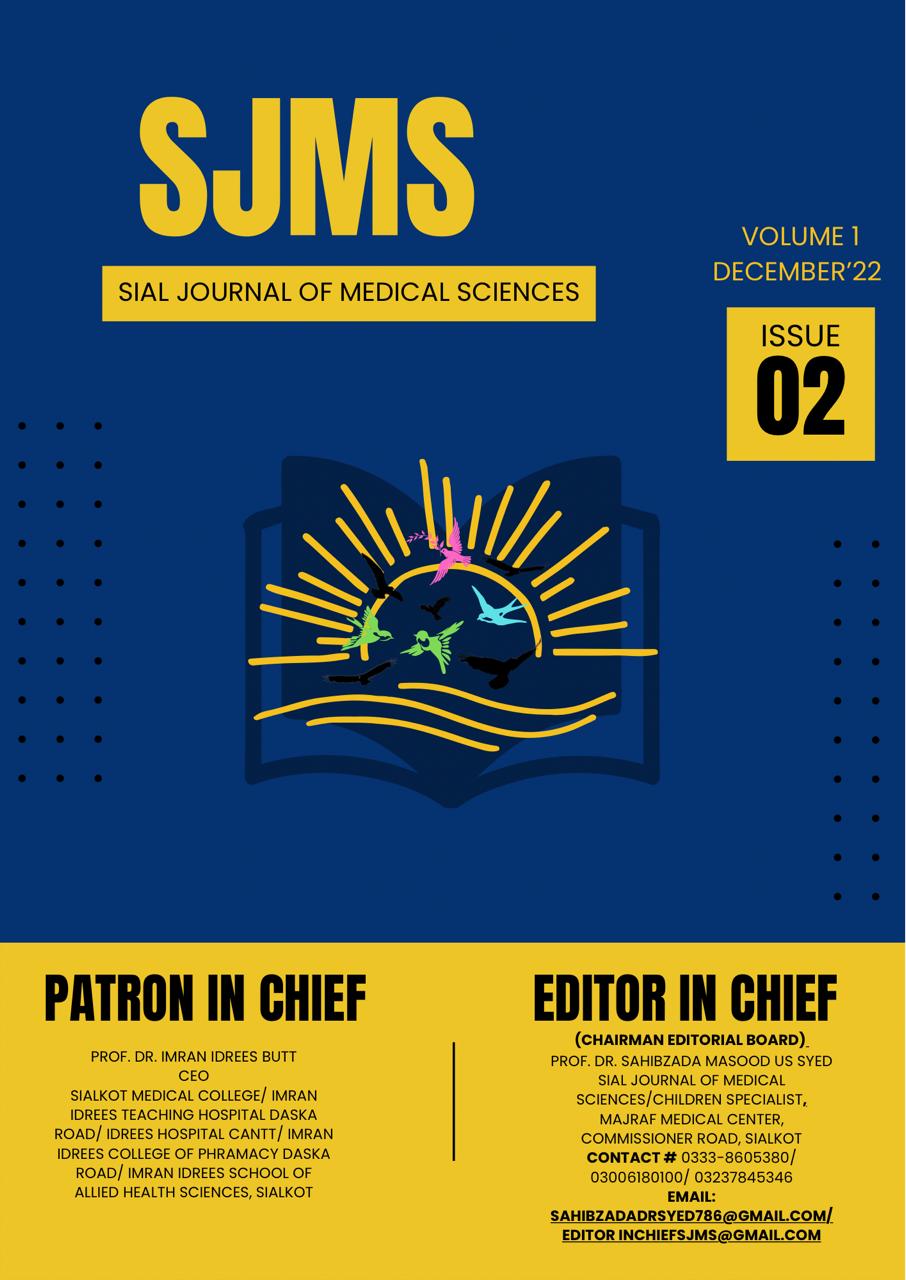DIETARY HABITS AND LIFESTYLE PRACTICES AMONG STUDENTS OF SIALKOT MEDICAL COLLEGE, SIALKOT
DOI:
https://doi.org/10.60127/sjms.v1i2.6Keywords:
determine dietary habit , lifestyle, habitAbstract
The objective of this study is to determine dietary habit and different lifestyle practices among University studentsThe study was conducted between 15th October to 15th December, 2020. Sampling technique was simple random sampling. We selected medical students (MBBS) studying in SMC for which we developed questionnaire based on demographic details and questions in accordance with our research.
A self-administrated questionnaire was distributed among the students of five academic years after taking their informed consent. The questionnaire comprised of four sections. The first section consisted of demographic information (age, sex, year of study, residence). The second section aimed to get knowledge of students regarding balanced diet, importance of nutritional supplements, consciousness about more sugar, caloric in diet, junk food preference and water intake. The third section aimed at determining symptoms related to malnutrition while fourth section was about the lifestyle of students in which regular exercise, stress, eating menu, sleeping hours and smoking habits.Out of 131 responses, Male to Female ratio recorded was 50.4%: 49.6% as most of them were students belonging to an urban residency. Well-balanced diet was being enjoyed by 55% students where remaining 45% lack one of the nutrients in their diet. Number of students taking supplements for adequate growth and proper functioning was 27.5%. Exercise as habit was lacking in 77.6% students. Water intake was approximately 4 to 6 glass on average in majority of students. Half of students take sugar in proper amount. Although the sleeping hours were adequate but the alarming situation was that 69.2% of them were night persons. Students eat junk food quite often and half of them skip breakfast. However, calories intake in 69.51% was adequate and 49.6% students think that they perform their tasks accordingly. Smoking prevalence was far so less as 85% students were non-smokers. 94% of them think that they enjoy proper diet but according to BMI, 25% students were overweight and 5% were underweight.
Downloads
Published
Issue
Section
License
Authors retain the copyright to their work and grant the Sial Journal of Medical Sciences the right of first publication under a Creative Commons Attribution 4.0 International (CC BY 4.0) license. This license allows others to share, adapt, and reuse the work for any purpose, including commercial use, as long as appropriate credit is given to the original authors and the journal.
By submitting a manuscript, authors confirm that the work has not been published previously (except as an abstract, lecture, or academic thesis), is not under review elsewhere, and has been approved by all authors and relevant authorities. Once accepted, the article will be openly accessible under the CC BY 4.0 license, ensuring wide dissemination and reuse with proper attribution.







